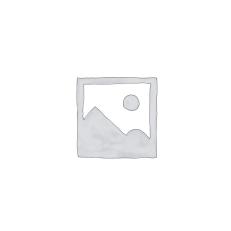Description
ABSTRACT
Swelling soils are soils that can experience large changes in volume due to changes in water content. This may be due to seasonal changes in moisture content, local site changes such as leakage from water supply pipes or drains, changes to surface drainage and landscaping, or following the planting, removal or severe pruning of trees or hedges. These soils represent a significant hazard to structural engineers across the world due to their shrink–swell behaviour, with the cost of mitigation alone running into several billion pounds annually. These soils usually contain some form of clay mineral, such as smectite or vermiculite, and can be found in humid and arid/semi-arid environments where their expansive nature can cause significant damage to properties and infrastructure. This work discusses the impact of soil composition on swell test properties. It also considers the mechanisms of swell soils and their behaviour, reviewing strategies for managing them in an engineering context, before finally outlining the problem of swell soils.
TABLE OF CONTENTS
COVER PAGE
TITLE PAGE
APPROVAL PAGE
DEDICATION
ACKNOWELDGEMENT
ABSTRACT
CHAPTER ONE
1.0 Introduction
1.1 Background of the project
- Statement of the problem
- Aim and objectives of the study
- Significance of the project
- Scope of the project
CHAPTER TWO
LITERATURE REVIEW
- Overview of the study
- Properties of swell soils
- Costs associated with swell clay damage
- Swell Formation processes
- Swell Soil distribution
- Characterization of swell soils
- Mechanisms of swell
- Strategies for engineering management: avoidance, prevention and mitigation
- Causes of swelling soils
CHAPTER THREE
3.1 Materials and Method
CHAPTER FOUR
4.1 Result
CHAPTER FIVE
- Conclusion and recommendation
CHAPTER ONE
1.0 INTRODUCTION
1.1 Background of the study
The swelling is a complicated phenomenon affected by a many parameters from mineralogical composition and physically-chemical properties over basic physical property to the influence of the existing surcharge pressure and the type of used material (lime or cement etc.) in the case of soil stabilization. The conditions needed for a swelling-susceptible soil to swell are the following:
- Stress relief in the soil body (this is always fulfilled for cut slopes) and/or
- water availability in the environment. This may or may not be fulfilled depending on circumstances. The swelling is tested under laboratory conditions on undisturbed soil samples, usually only linear swelling is tested. Alternative procedure is to measure deformation in time in the oedometer while also measuring the swelling pressure. However, testing in stand with dynamometers where both swelling pressure and deformation are measured in time seems to be the best way to test swelling. The problem is that this test gives the values of the swelling pressure for the given initial state of the soil. But we also have to be interested in the swelling pressure for lower initial water content, because we cannot guarantee that such conditions will not occur in reality. When we focus on the swelling significance in transport engineering and its complexness (influence cut slope stability, destructive effects on pavements, the correct way of soil improvement etc.) the problems with test are clear. The duration of the test is between 160 and 210 hours. Therefore, the laboratory has to be sufficiently equipped for this type of time demanding testing and the cost of tests is also significant. If there are any criteria for swelling in technical standards, it is only for linear swelling. But these values do not give any information about the swelling pressure (deformation is only an accompanying effect). It is shown that the swelling pressure varies with different initial conditions while the deformation may still be the same 3%.
Clay soils with swelling properties cause deformations in engineering structures depending on the change in stress conditions. Estimates in the literature that the annual cost of damages caused by swelling soil could reach billions of dollars worldwide. While settlements occur on the soils due to the increase in stress conditions, swelling may be observed as a result of the decrease in stress. The changes in the volume of the soil mass that occur due to the settlement and swelling properties are the most effective factors in the design of the projects related to the soil.
For this reason, it is extremely important to determine the swelling characteristics of the soil in the buildings to be built on it and to make the necessary precautions by stabilizing before the application phase (Wood et al., 2018). Therefore, one of the geotechnical engineering felds of study is knowing how the soil and structure will be affected by different loading and environmental conditions of the soils (Wood et al., 2018). One of the most important stages of these evaluations is to determine the swelling properties of clay soils, where large volume changes may occur. In this context, it is necessary to determine and predict the swelling potential of the clayey soil, the maximum pressure level that will occur because of swelling, and the amount of swelling that will occur on the soil surface. When the interaction of clays with water is examined in detail, the predicted problems can be controlled by taking necessary measures (Wood et al., 2018). Most engineering structures built on clay soils cause moisture changes in the clay due to the stresses they apply, degrading the natural water content in the clay (Shafiee et al., 2018). Clay swelling occurs as a result of balancing the interaction forces between the clay surface, ions, and water. Due to the increase in the water content of dry soil, the clay grains move away from each other and increase in volume, and as a result, the thrust force occurs. Many factors such as clay percentage, the mineralogical structure of clay, dry unit weight, stress conditions, external loads, water content, and climate conditions can affect the swelling of clay soils. Although clays tend to swell more at lower water content than optimum water content, the amount of swelling is negligibly small at water content above optimum. Shafiee et al. (2018) suggested that the swelling pressure increased as the water content decreased. Chen (2017) stated in his studies that volumetric swelling decreased due to the increase in water content.
1.2 Statement of the problem
When a soil deposit is loaded, for example, by a structure or man-made fill, deformation will occur. Normally, deformation downward is called settlement. Deformation may also upward which is then called heave. A common cause of heaving is that a building or pavement is constructed when the top soil layer is relatively dry. The structure covering the soil increases in water content due to capillarity action and the soil swells. Heave will result if the pressure exerted by the pavement or building is less than the swelling pressure. The heave is usually uneven and causes structural damage (Holts and Kovacs, 1981).
Swelling soils causes serious engineering problems. Estimates indicate that some twenty to twenty five percent of land area in United States is covered with soils that are expansive and economic damage has increased from 5.5 billion dollars in 1984 to 7 billion dollars in 2003 per year (Hung, 2003). In this study, A comparative study of clay-rich and sand-rich soil was carried out.
1.3 Aim and objectives of the study
The aim of this work is to carry out a study on the impact of soil composition on swell test results: a comparative study of clay-rich and sand-rich soil. The objectives of the study are:
- To study swell soil is formed and distributed
- To study their geological and geotechnical characterization.
- To understand the mechanisms of swell soils and their behaviour, reviewing strategies for managing them in an engineering context.
1.4 Significance of the study
This study will serve as a means of providing readers with a basic understanding of swell soils, reviewing the nature and extent of swell soils, and discuss how they form, how they can be recognized, the mechanisms and behaviour of swell soils.
1.5 Scope of the study
The scope of this work covers studying the impact of soil composition on swell soil test, comparing the swelling of clay and sand soil. the study will also discusses the properties and costs associated with swell soils, their formation and their geological and geotechnical characterization. It also considers the mechanisms of swell soils and their behaviour, reviewing strategies for managing them in an engineering context, before finally outlining the problem of swell soils.
CHAPTER FIVE
5.1 Conclusions and Recommendation
The clay void ratio versus the vertical effective stress for a clay material can be obtained by comparing the fall cone penetration data of the clay with the slope obtained for artificial clay. The chart constructed for artificial clay using the fall cone can be used to characterize the swell potential of any given plastic to highly plastic clay.
The stress–strain behavior of the clay-sand mixture system is influenced by the behavior of each component. The independent responses of fine- and coarse-grained components can be useful for estimating stress portioning and predicting the overall behavior of the soil mass. The porosity compression relationship of the coarse part can be studied when the voids are partially filled up with fine material in a dry state. This was found to be comparable to the overall mixture behavior when wetted. The modified Studds model was suitable for the clay void ratio versus the effective stress for 40% clay or less.

